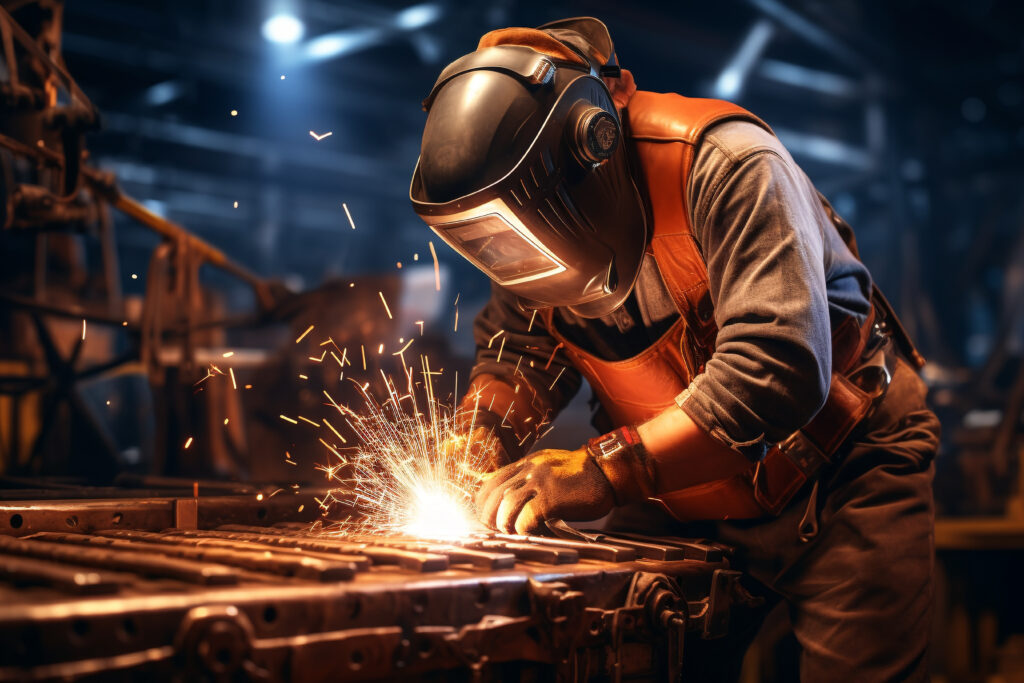Table of Contents
Toggleproper mig welding technique
Introduction:
Proper MIG (Metal Inert Gas) welding technique is essential for achieving quality welds. However, it is equally important to prioritize safety during the welding process. MIG welding involves various hazards, including electric shock, fumes, heat, and UV radiation. Now, we will discuss the safety precautions that should be followed when using the proper MIG welding technique to ensure the well-being of the welder and those in the vicinity.
Wear Protective Clothing and Equipment:
When practicing proper MIG welding technique, it is crucial to wear appropriate protective clothing and equipment. This includes a welding helmet with a proper shade lens to protect the eyes from arc radiation, welding gloves, flame-resistant clothing, and leather boots. Protective clothing acts as a barrier against sparks, molten metal, and harmful UV radiation.
Ensure Sufficient Ventilation:
Proper ventilation is crucial during MIG welding to prevent the accumulation of hazardous fumes and gases. Ensure that the welding area is well-ventilated, either by working in an open space or using local exhaust ventilation systems. Proper ventilation helps in reducing the exposure to potentially harmful welding fumes, such as those produced by the welding wire and base metal.
Use a Welding Fume Extraction System:
In addition to ventilation, it is recommended to use a welding fume extraction system to remove welding fumes directly from the work area. These systems help in capturing and filtering out hazardous particles, ensuring clean air for the welder to breathe. Proper fume extraction contributes to a healthier and safer working environment.
Maintain a Clean and Organized Work Area:
A cluttered or messy work area can increase the risk of accidents and injuries during MIG welding. Keep the work area clean and organized, free from any flammable materials, oil, grease, or other potential fire hazards. Clear the area of any unnecessary objects that could obstruct movement or cause tripping hazards.
Inspect and Maintain Welding Equipment:
Before starting any welding operation, it is important to inspect and maintain the welding equipment. Check for any damaged or frayed cables, loose connections, or faulty components. Ensure that the welding machine is properly grounded to prevent electric shock hazards. Regular maintenance and inspection of equipment help in preventing malfunctions and ensuring safe operation.
Ground the Workpiece and Welding Equipment:
Proper grounding is an important safety measure in MIG welding. Ensure that both the workpiece and welding equipment are properly grounded to avoid electric shock. Improper grounding can lead to electrical hazards and potential injury to the welder. Follow the manufacturer’s guidelines for grounding procedures.
Be Mindful of Electric Shock Hazards:
Electric shock is a significant hazard in MIG welding. Avoid touching live electrical parts, including the welding electrode and workpiece, with bare hands or any conductive object. Insulate yourself from the workpiece by wearing dry gloves. Additionally, do not weld in wet or damp conditions to minimize the risk of electric shock.
Protect Against Arc Flash and UV Radiation:
The intense UV radiation produced during MIG welding can cause severe damage to the eyes and skin. Always wear a welding helmet with a proper shade lens to protect your eyes from arc flash and UV radiation. Cover exposed skin with flame-resistant clothing and use UV-resistant welding curtains or screens to protect others in the vicinity.
Fire Safety Precautions:
MIG welding involves the use of heat and sparks, which can potentially ignite flammable materials. Keep fire extinguishers readily available in the work area and know how to use them. Clear the work area of any flammable substances and have a fire safety plan in place to respond to emergencies effectively.
Receive Proper Training and Follow Welding Codes:
Proper training is essential to understand and follow safety precautions in MIG welding. Seek training from qualified professionals to learn the correct techniques and procedures. Familiarize yourself with welding codes and industry standards to ensure compliance and enhance safety awareness.
Conclusion:
Proper MIG welding technique is not only about achieving quality welds but also about ensuring the safety of the welder and others in the vicinity. By following these safety precautions, such as wearing protective clothing, ensuring proper ventilation, maintaining a clean work area, and protecting against electric shock, arc flash, and UV radiation, welders can minimize risks and create a safer working environment. Remember, safety should always be the top priority in MIG welding operations.

